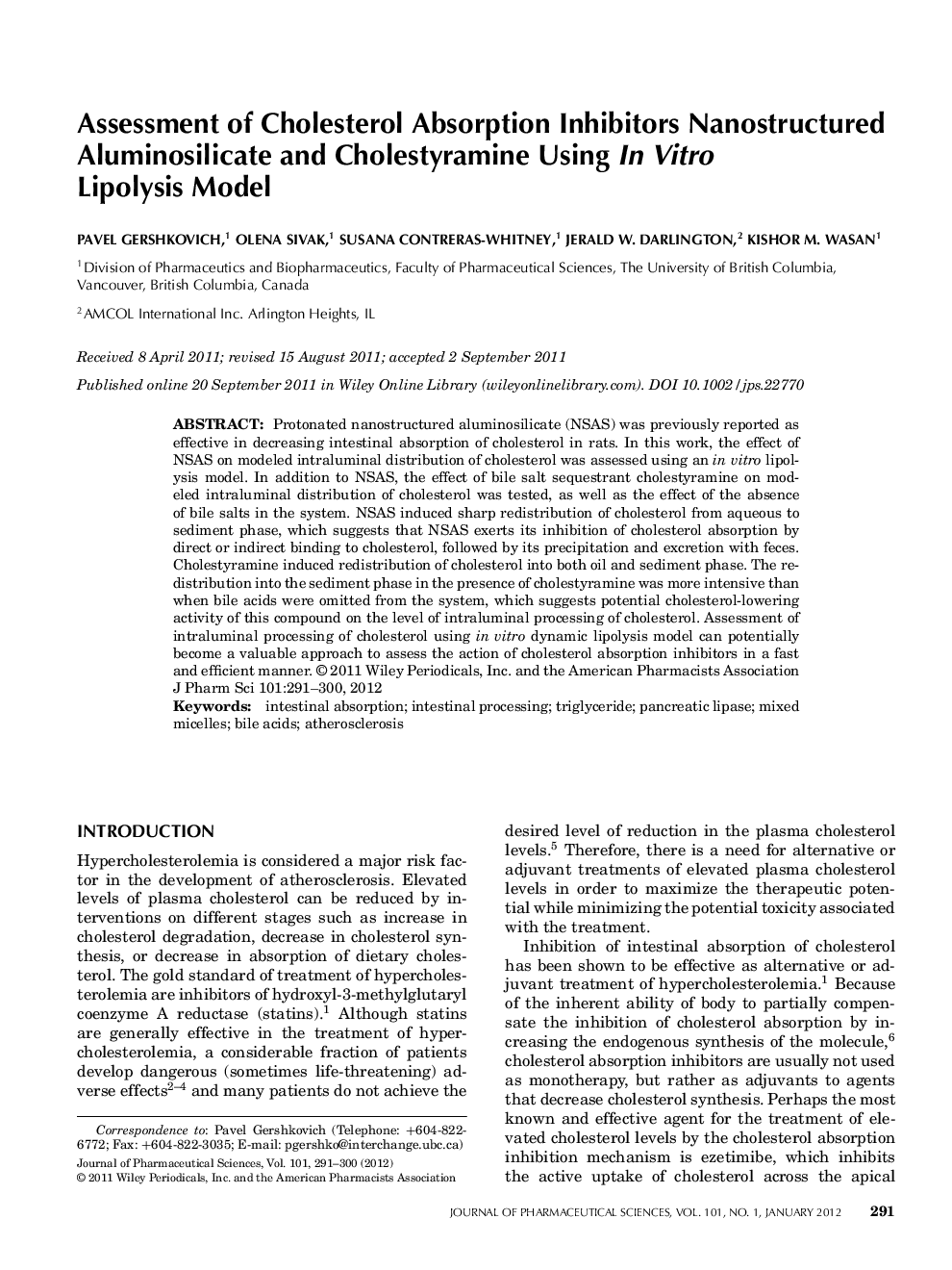| کد مقاله | کد نشریه | سال انتشار | مقاله انگلیسی | نسخه تمام متن |
|---|---|---|---|---|
| 2485414 | 1114354 | 2012 | 10 صفحه PDF | دانلود رایگان |
عنوان انگلیسی مقاله ISI
Assessment of Cholesterol Absorption Inhibitors Nanostructured Aluminosilicate and Cholestyramine Using In Vitro Lipolysis Model
دانلود مقاله + سفارش ترجمه
دانلود مقاله ISI انگلیسی
رایگان برای ایرانیان
کلمات کلیدی
موضوعات مرتبط
علوم پزشکی و سلامت
داروسازی، سم شناسی و علوم دارویی
اکتشاف دارویی
پیش نمایش صفحه اول مقاله

چکیده انگلیسی
Protonated nanostructured aluminosilicate (NSAS) was previously reported as effective in decreasing intestinal absorption of cholesterol in rats. In this work, the effect of NSAS on modeled intraluminal distribution of cholesterol was assessed using an in vitro lipolysis model. In addition to NSAS, the effect of bile salt sequestrant cholestyramine on modeled intraluminal distribution of cholesterol was tested, as well as the effect of the absence of bile salts in the system. NSAS induced sharp redistribution of cholesterol from aqueous to sediment phase, which suggests that NSAS exerts its inhibition of cholesterol absorption by direct or indirect binding to cholesterol, followed by its precipitation and excretion with feces. Cholestyramine induced redistribution of cholesterol into both oil and sediment phase. The redistribution into the sediment phase in the presence of cholestyramine was more intensive than when bile acids were omitted from the system, which suggests potential cholesterol-lowering activity of this compound on the level of intraluminal processing of cholesterol. Assessment of intraluminal processing of cholesterol using in vitro dynamic lipolysis model can potentially become a valuable approach to assess the action of cholesterol absorption inhibitors in a fast and efficient manner. © 2011 Wiley Periodicals, Inc. and the American Pharmacists Association.
ناشر
Database: Elsevier - ScienceDirect (ساینس دایرکت)
Journal: Journal of Pharmaceutical Sciences - Volume 101, Issue 1, January 2012, Pages 291-300
Journal: Journal of Pharmaceutical Sciences - Volume 101, Issue 1, January 2012, Pages 291-300
نویسندگان
Pavel Gershkovich, Olena Sivak, Susana Contreras-Whitney, Jerald W. Darlington, Kishor M. Wasan,